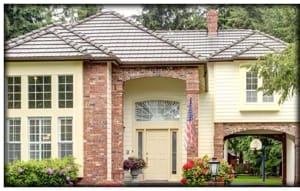
A house’s siding is one of the major elements of the structure of a house, aside from the roof and flooring. It keeps the house livable when dealing with outside worries like wind, cold, heat, and rain. A house’s siding’s appeal is also a factor in dictating its marketability and value, since first impressions are what sells. But the question still remains, what is the best “bang for the buck” house siding out there? How much does it cost to side a house? TGUC Financial can help you with the siding replacement cost.
Currently, there are numerous types of siding sold on the market. There are also many choices of materials, styles, and installation types for different appearances to choose from. Together with these are the different maintenance, durability, quality, and other things to consider in getting the right siding. However, a wide range of costs comes with these choices as well. The national average range of siding installation costs goes from $7,500 to $22,500, with around $13,500 spent by the majority of homeowners for 1,500 square feet of cedar siding in a Dutch lap installation. Around $4,500 is the lowest siding installation cost for 1,500 square feet of installed hollow vinyl siding. On the other hand, the highest cost is around $60,000 for a 1,500 square feet professionally installed solid stone siding.
House re-siding costs range between $2,900 to $43,000, which may vary considering factors such as the material type, size covered per square foot, house height, and hourly labor charges.
What is House Siding?
Home siding is the visible part and finished vertical outer surface of a home. It can be made from numerous materials such as vinyl, fiber cement, wood, metal, stone veneer, or brick veneer. Professionally installed siding can add not only beauty and protection on the outside but also value to your home. It is finished with fascia boards and molding around the windows and doors.
How Much Does it Cost to Side a House by Material Used
The costs of materials in house re-siding cover more than half of the total expense of a new siding project. Commonly used materials are:
- Wood siding — Made of genuine wood clapboard, batten and board, or engineered wood. (Cost: around $2 to $6 per square foot)
- Aluminum siding — More expensive than vinyl. (Cost: around $3 to $4 per square foot)
- Vinyl siding — Much more budget-friendly than wood siding. (Cost: around $2 to $3 per square foot)
- Vinyl log siding — Appears to make siding look like real logs. (Cost: around $2 to$8.50 per square foot)
- Fiber cement siding — Artificial siding material made from cement, cellulose, and other materials. (Cost: around $0.70 to $5.25 per square foot)
- Brick veneer —Available in a wide range of types together with its wide range of costs per square foot. (Cost: around $3 to $10 per square foot)
- Stone veneer — Can either be real or artificial. (Cost: around $5.50 to $10.75)
How Much Does it Cost to Side a House in Average Labor Costs
There are some materials that are easier to install and work with and those that are more commonly used than others. This affects costs in installing house siding. It also includes other factors such as a particular siding popularity, seasonal variations, the complexity and height of the house.
Materials can be divided into two categories based on its labor cost in residing a house:
- Labor costs from $1 to $5 per square foot – vinyl, wood, engineered wood, aluminum, and fiber cement siding
- Labor costs from $2 to $20 per square foot – Brick, stone, and vinyl log siding
Generally, with local conditions aside, a new wood siding installation project on a 2,000-square-foot one-story house (around 1,500 square feet of siding) will cost around $2,900 and $8,500. On the other hand, the same house with stone siding will cost around $24,000 to $43,000 to complete.
There are numerous local conditions that could affect the labor charges and overall costs of a house re-siding project. Verify the licensing, your contractor’s workers’ compensation insurance, and liability insurance.
Hidden/Additional Costs to Consider
Expect to pay for the removal of old siding materials on your home, unless your house is a new construction. This is because there can be hidden issues underneath the old siding which may increase the cost of re-siding your house. You may encounter:
- Rotted sheathing
- Insect or animal damage
- Trapped moisture
Additional costs to include in your budget are any homeowner association (or HOA) permits, weather delays, local building permits, as well as costs for removing old materials.
Plan on adding 10-15% to your budget as a contingency for any unexpected expenses.
Most siding contractors will require a down payment of one-third of the estimated total project cost before the real work begins. Make sure you get the details before you start.
Also expect one callback to address minor issues you may have not noticed right away. This should be included in the contractor’s bid.
TGUC Financial and Siding Replacement Cost Financing
TGUC Financial can help you with sinding replacement. Don’t put off finishing your plumbing. Contact us today.

Recent Comments